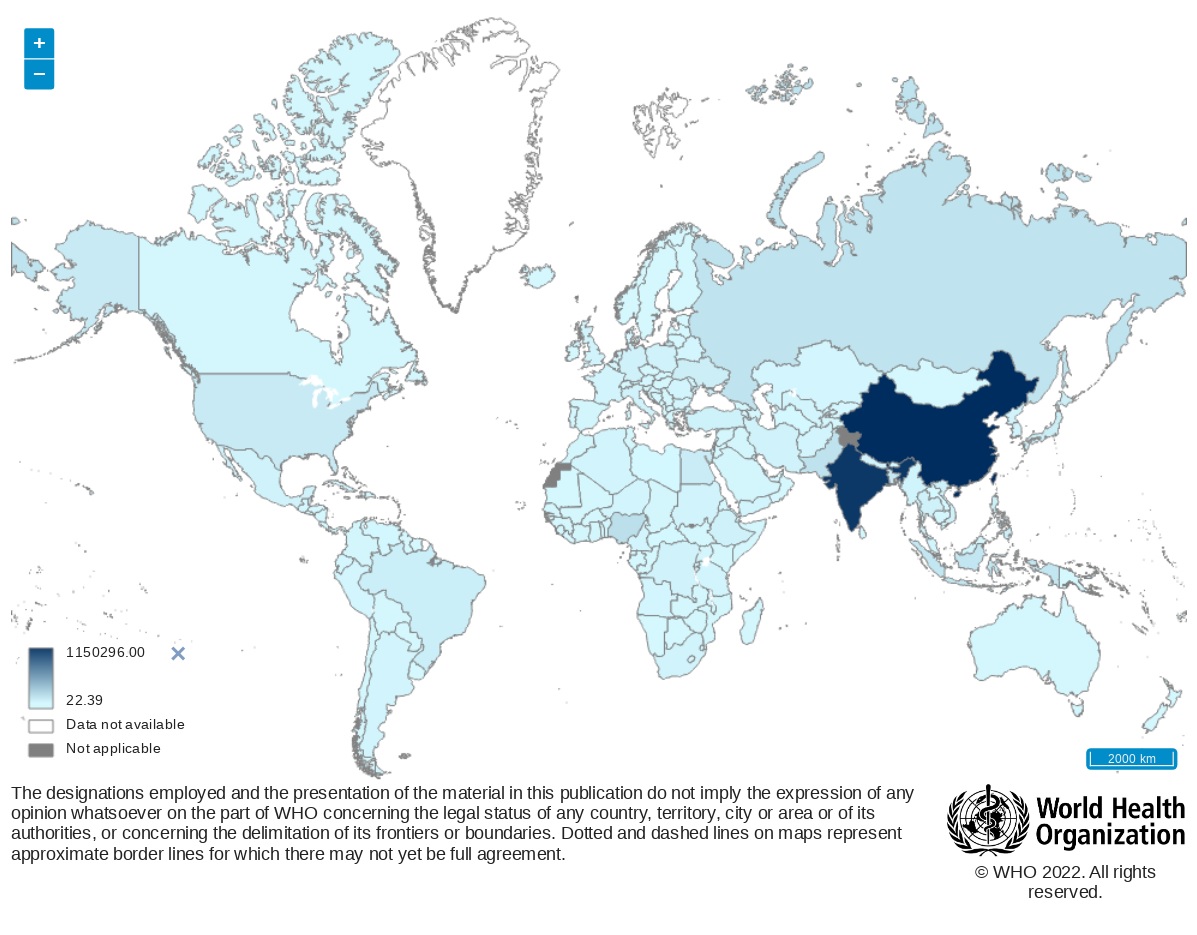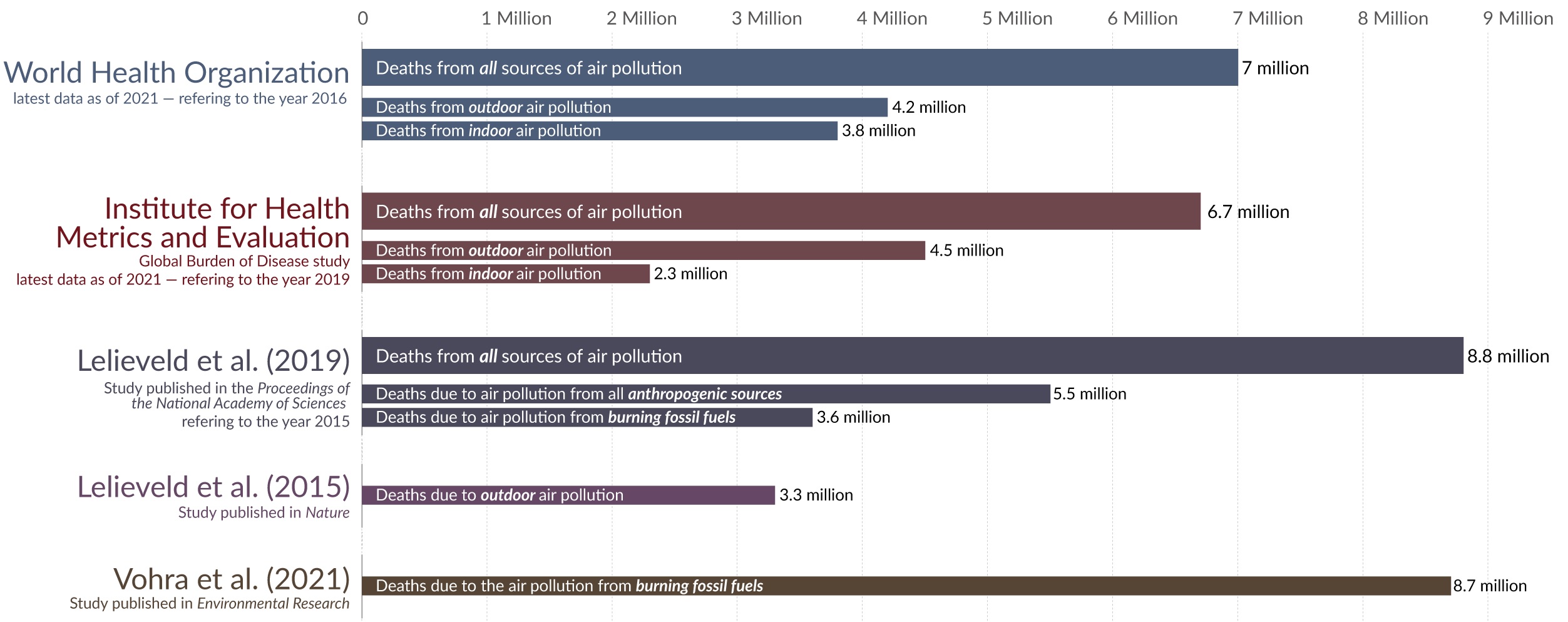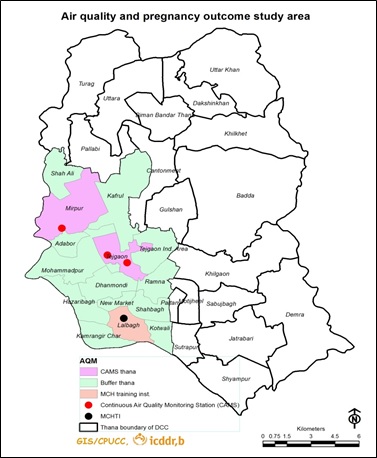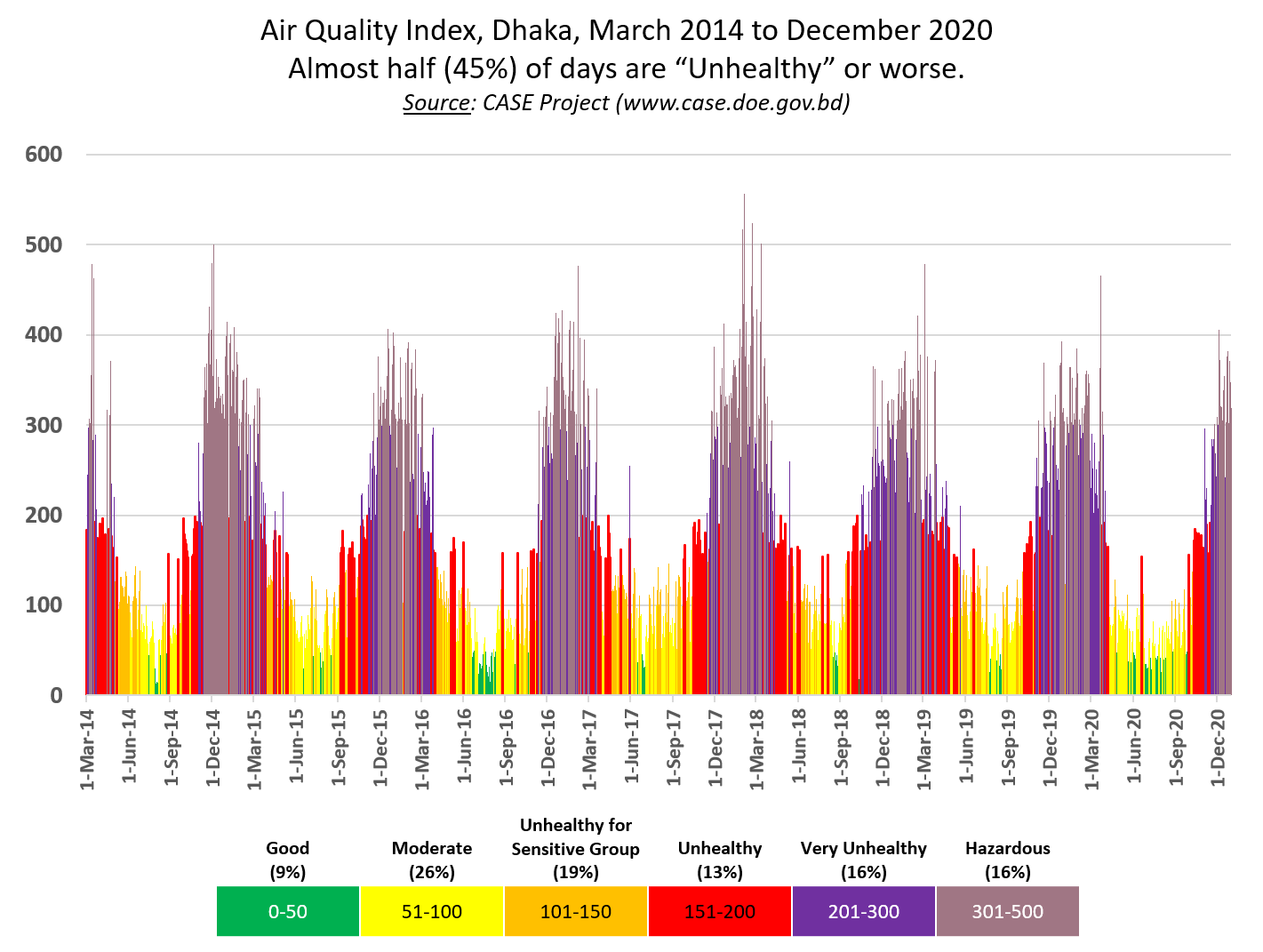Global scenario of air pollution
Air pollution- the biggest environmental risk to health, is responsible for about one in every nine deaths annually (1). Air pollution affects everyone- every region, every socio-economic segment, and all age groups. There are two most distinct types of air pollution- indoor air pollution and ambient or outdoor air pollution - the latter being one of the most critical risk factors contributing to death and disability (2). More than 92% of the world's population is exposed to unsafe levels of air pollution as per World Health Organization (WHO) guideline standards (3). Among various types of air pollutants, air particulate matter of aerodynamic diameter < 2.5µm (PM2.5) has distinct significance, as it contributed to over four million deaths worldwide, mostly from ischemic heart disease and stroke after long-term exposure (4). Moreover, around 100 million lost years of healthy life have been linked to ambient PM2.5 exposure, placing it as the 6th highest risk factor for disability-adjusted life-years (DALYs) (5).
Air pollution is defined by the state of indoor and outdoor air that has been contaminated by some gaseous and solid particles in its’ natural characteristics and become harmful to health; major air pollutants include particulate matter (PM2.5 and PM10), carbon monoxide (CO), ozone (O3), black carbon (BC), sulfur dioxide (SO2) and nitrogen oxides (NOx). Among the pollutants, particulate matter PM2.5 is the most critical one and is generally monitored globally for assessing air quality status (6). In 2016, about 7 million people died due to air pollution globally. It has been estimated that about 29% of lung cancer deaths, 24% of strokes, and 25% of heart disease deaths were caused by air pollution in 2016 (7). The global burden of disease (GBD) due to air pollution is measured by the numbers and age-standardized rates of deaths in a given year and the numbers of healthy years of life lost from death or disability, represented by ‘disability-adjusted life years (DALYs). Just in 2016, the DALYs due to air pollution has been estimated to be around 106 million worldwide (2).

Map 1: Ambient air pollution attributable to deaths
However, a very recent study by Vohra et al. (2021) demanded that the death toll from outdoor air pollution caused by fossil fuels is much higher than previous measurements. The researchers estimate that the global death toll to air pollution could be as high as 8.7 million in 2018; which was almost one-fifth of all deaths in that year (8). There are 3 Sustainable Development Goals (SDGs) linked to air pollution (Indicator 3.9.1, 7.1.2, and 11.6.2) and research has gained quite a good momentum recently (Figure 1). In 2019, the UN Special Rapporteur on the Issue of Human Rights Obligations Relating to the Enjoyment of a Safe, Clean, Healthy, and Sustainable Environment highlighted the different state obligations in relation to the right to breathe clean air, as well as the specific obligation to protect people and groups in vulnerable situations (9).

Figure 1: How many people die from air pollution each year
(source: https://ourworldindata.org/data-review-air-pollution-deaths )
WHO air pollution data portal
The WHO air quality database compiles data on ground measurements of annual mean concentrations of particulate matter PM10 and PM2.5 along with other parameters that represent an average for any specific city or town, rather than individual stations. Both groups of pollutants originate mainly from human activities related to fossil fuel combustion. The database was released in April 2022 and currently hosts data on air quality for over 6000 human settlements in more than 100 countries. The database is updated regularly every 2-3 years since 2011 and presently the fifth update is available at: (https://www.who.int/data/gho/data/themes/air-pollution/who-air-quality-database ).
Air pollution in Bangladesh
Almost 100% of the Bangladeshi population lives in areas exceeding the WHO safe air standard. The population is exposed to a mean annual 89 μg/m3 ambient PM2.5, the highest among the South Asian countries (10). Major sources of PM2.5 are vehicular and brick kiln emissions, re-suspension from roads and construction sites, and refuse burning by slum dwellers; with clear seasonal variation and elevated concentrations during the winter due to seasonal fluctuations of the emissions, and meteorological effects including wind direction and mixing heights (11). Air pollution in Bangladesh has taken a turn for the worst; along with ascending concentration of PM2.5, since 2010 and over 60% of these pollutants originate from different anthropogenic sources (12). There are no long-term trend data for Bangladesh, but the Clean Air and Sustainable Environment (CASE) project (http://case.doe.gov.bd/ ) started capturing air quality data in 2013.
Clean Air and Sustainable Environment (CASE) project
The clean Air and Sustainable Environment (CASE) project (http://case.doe.gov.bd/) run by the Department of Environment (DoE) under the Ministry of Environment, Forest and Climate Change has established a database on air quality for Bangladesh. The project was initially supported by World Bank and is now totally run by the Department of Environment. The project started producing quality data on the status of air in 2014 that could be assessable through their website without any cost along with a monthly report with a specific value for different parameters for all the 11 air quality monitoring stations. The CASE project monitors air quality parameters: Particulate matter (PM2.5 and PM10), Sulfur dioxide (SO2), Nitrogen Dioxide (NO2), Ozone (O3), and Carbon monoxide (CO) that have been used to prepare Air Quality Index (AQI).
The DoE has so far established 11 continuous air monitoring stations (CAMS) in 8 major cities and has a plan to install 5 more CAMS and 15 compact monitoring systems in different locations of the country. The monitoring network encompasses all the regions of the country - Dhaka, Narayanganj, Gazipur in the center, Chittagong in the south-east, Khulna, and Barisal in the south, Rajshahi in the west, and Sylhet n the north-east regions of the country. There are 3 CAMS located in Dhaka city to report the air quality on daily basis, the locations are Mirpur Dar us Salam, Farmgate, and the National Parliament building.

Map 2: Location of the CAMS in Dhaka city
Air Quality Index (AQI)
The air quality index (AQI) is a value representing the status of air quality in an area. In Bangladesh, the AQI is calculated based on the prevailing concentrations of 5 criteria pollutants, PM (PM10 and PM2.5), NO2, CO, SO2, and O3. AQI value tells how clean or polluted the air is, and what the associated health impacts might be on the public. The AQI focuses on health effects that one might experience within a few hours or days after breathing polluted air. The AQI is a single number from 0 to 500 calculated on the basis of pollutant concentrations measured in an area. The higher the AQI, the greater is the air pollution level and thus, indicates greater public health concern (13).
Several other public and private organizations apart from DoE also monitor the air quality in their own capacity; recently icddr,b has also set us a small ‘IQAir Air Quality Monitor’ in its own facility that should provide the AQI value for the Mahakhali area of Dhaka city on Daily basis. Previously icddr,b used the CASE project AQI data in its ‘Poor Air Quality and Pregnancy Outcome in Dhaka, Bangladesh’ study, and the AQI graph produced in the study (Figure 2) clearly shows how notoriously bad the air has become in the city. With the continuous implementation of various mega projects within the city, there is little hope that the air quality situation will soon be recovered to any health status in the city and thus people should take precautions on their personal level to protect themselves. Also, the dire situation demands critical attention to assess the actual burden of this poor air quality condition on population health and possible countermeasure to overcome such an adverse situation.
Figure 1: AQI Figure of Dhaka Darussalam Station

1. WHO. Ambient air pollution: A global assessment of exposure and burden of disease Geneva, Switzerland: World Health Organization; 2016. Report No.: 9241511354.
This website was produced with the support of the United States Agency for International Development (USAID) under the terms of USAID's Research for Decision Makers (RDM) Activity cooperative agreement no. AID-388-A-17-00006
Views expressed herein do not necessarily reflect the views of the U.S. Government or USAID. icddr,b is also grateful to the Governments of Bangladesh, Canada, Sweden and the UK for providing unrestricted/institutional support
68, Shaheed Tajuddin Ahmed Sarani Mohakhali, Dhaka 1212, Bangladesh
icddr,b is located at the Mohakhali area in Dhaka, just ask your driver for the "Cholera Hospital"
